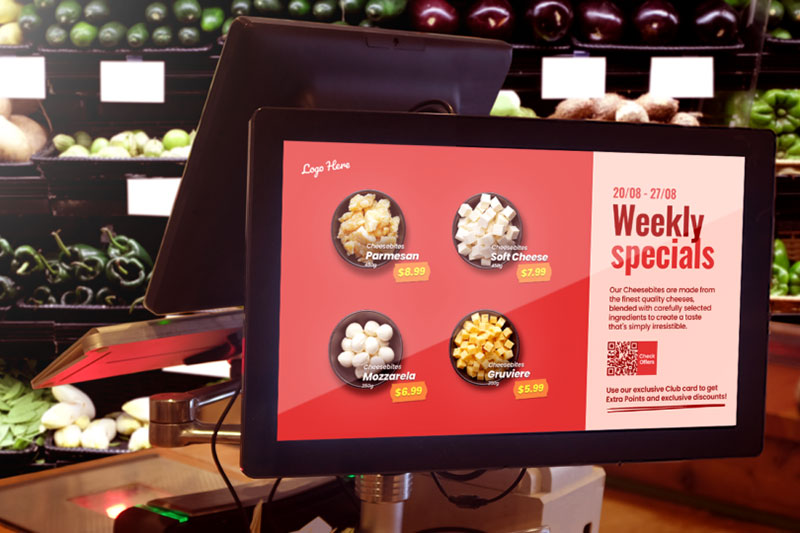The retail industry landscape is shifting quickly. As disruptions occur more frequently, brands continue to adapt to new technologies that in turn shape the industry for the future.
In retail, this means that brands are pushing for omnichannel experiences that move customers along seamless shopping journeys across all channels, in order to engage them at every possible touchpoint.
One of the more popular ways is to employ digital point-of-sale materials (POSM). In this article we’ll explore four examples that stand out in retail settings.
1. Coca-Cola Freestyle contactless drinks dispenser
Coca-Cola’s Freestyle digital drinks dispenser is nothing new, as it’s been around for over a decade. It’s a simple concept where customers interact with its digital touchscreen to select and dispense their drinks.
Perhaps what also made it impressive was that they could choose from over 200 hundred beverage options offered by the brand.
But with the rise of contactless payments in response to COVID-19, the F&B monolith collaborated with Amazon Web Services to upgrade their Freestyle machines.
Now customers interact with them using their smartphones. All they have to do is scan a QR code to access the interface remotely on their phones. No app downloads needed! And with every button they tap, the machine’s response is instantaneous.
Source: Mashed
2. Augmented reality (AR) interactive display by Topshop
While the use of AR isn’t necessarily widespread in use across retail outlets, it has been around for some time. Soon it would be accessible to many brands that previously could not access the technology.
One example is Topshop which worked together with Russian company AR Door to create the Kinect Fitting Rooms back in 2011. It’s a large screen at more or less the height of an average person, and all customers have to do is stand in front of the screen to see how they’d look like wearing a selection of clothes from the retailer.
Kinect Fitting Room display at Topshop (Source: YouTube)
Source: Shopify
A number of other big brands have used AR as digital POSM to enhance shopping experiences. Among the notable names are Adidas, Zara, Gucci and IKEA.
But given how far AR has come over the past decade, we won’t be surprised to see smaller brands and retailers employ some form of creative use for the technology for their own POSM initiatives.
3. Digital price tags by Kroger
This one doesn’t pack the same wow factor but is impressive and important nonetheless. American supermarket Kroger joined hands with Microsoft to create a digital shelf display Kroger EDGE (Enhanced Display for Grocery Environment).
What EDGE does is simple: display prices on a screen. By doing so, the retailer saves loads of time and resources updating the prices of its products. No need to manually replace the price tags. Just update them on the system and they’re reflected on the digital shelves.
What’s more is that EDGE offers versatility. It could be used to display digital ads as well, so it’s a matter of the creativity for brands to make the most of the technology.
Source: Indigo Digital
4. Robotic display shelves by Tokinomo
While this one is more electronic and less strictly digital, it still makes the list as a strong alternative to digital screens. The Tokinomo in-store marketing robots use a combination of physical movement and sound to get retail customers to pay attention to products.
Check out how it works here.
The motion technology of these shelf robots is quite obviously robotic, but that’s part of the charm. If customers pay attention (about 50% of them do), then it still counts as a win for visual merchandising!
Some of the brands who use Tokinomo include Nestle, Unilever, Johnson & Johnson, Procter & Gamble, Philips, Niva, Jameson and Henkel.
Tokinomo in action for a Nutella product display (Source: YouTube)
The future is waiting for brands and retailers
It’s no secret that retailers are paying more attention to digital POSM to win customers and it’s changing how we do business. They can be used for a variety of purposes from generating more foot traffic and sales to bringing people back into your store after they’ve left.
As we’ve seen with the examples above, brands can effectively use them when they have a clear goal in sight, plus an emphasis on creative problem-solving. Are there any digital POSM you’ve seen that catches your attention?









